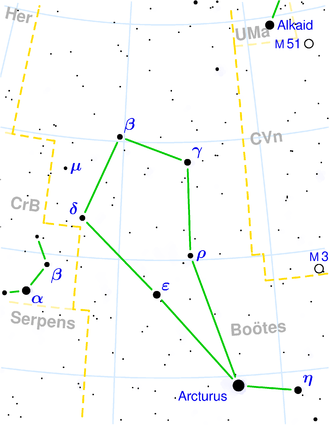NGC 5293
| Galaxy NGC 5293 |
|
|---|---|

|
|
| SDSS | |
| AladinLite | |
| Constellation | Bear keeper |
|
Position equinox : J2000.0 , epoch : J2000.0 |
|
| Right ascension | 13 h 46 m 52.7 s |
| declination | + 16 ° 16 ′ 22 ″ |
| Appearance | |
| Morphological type | SA (r) c |
| Brightness (visual) | 13.1 mag |
| Brightness (B-band) | 13.7 mag |
| Angular expansion | 1.8 ′ × 1.5 ′ |
| Position angle | 120 ° |
| Surface brightness | 14.1 mag / arcmin² |
| Physical data | |
| Redshift | 0.019297 ± 0.000023 |
| Radial velocity | 5785 ± 7 km / s |
|
Stroke distance v rad / H 0 |
(259 ± 18) · 10 6 ly (79.3 ± 5.6) Mpc |
| history | |
| discovery | Wilhelm Herschel |
| Discovery date | March 21, 1784 |
| Catalog names | |
| NGC 5293 • UGC 8710 • PGC 48854 • CGCG 102-057 • MCG + 03-35-024 • IRAS F13444 + 1631 • 2MASX J13465265 + 1616220 • GC 3648 • H V 6 • GALEX ASC J134652.65 + 161621.5 | |
NGC 5293 is a 13.1 likes bright spiral galaxy of Hubble type Sc in the constellation Bootes the northern sky . It is estimated to be 259 million light years from the Milky Way and about 140,000 ly in diameter.
The object was discovered on March 21, 1784 by Wilhelm Herschel , who described it as "extremely faint, very large with mottled appearance".
